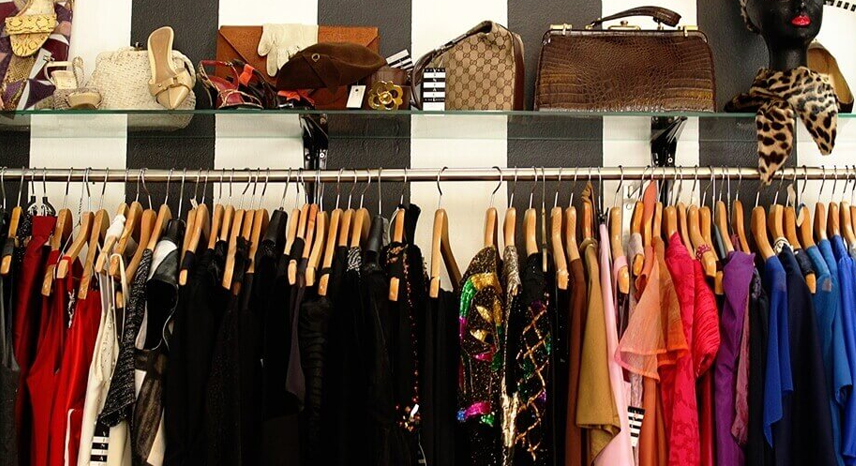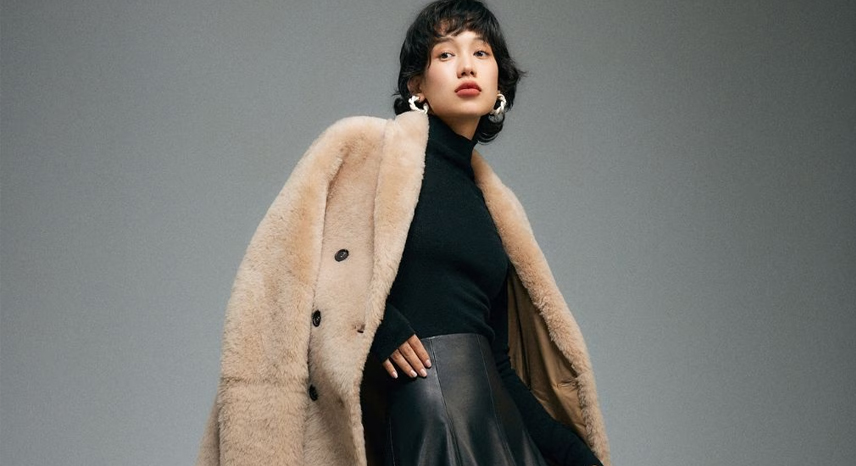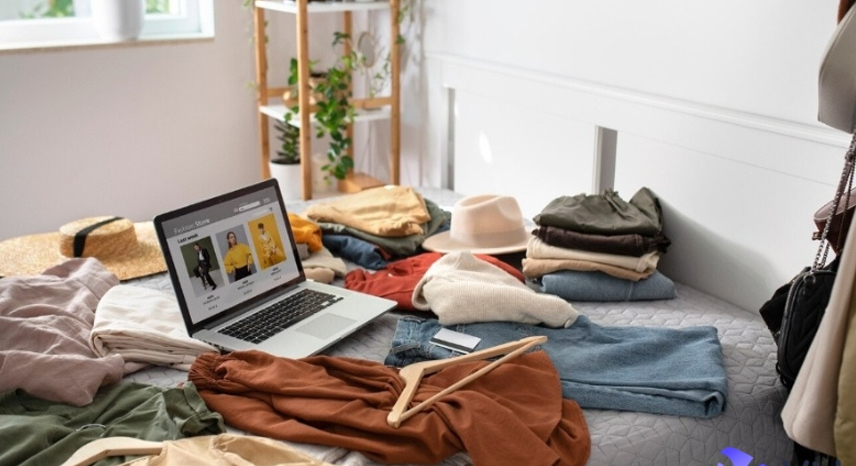How to Shop Vintage: Tips for Finding Timeless Pieces

Introduction
Vintage fashion has an undeniable allure. It’s not only about owning a piece of history; it’s about finding unique items that express individuality and elevate your personal style. Whether you’re a seasoned collector or a newbie to the world of vintage shopping, learning how to navigate thrift stores, vintage boutiques, and online marketplaces is key to uncovering those timeless treasures. In this guide, we’ll share practical tips, strategies, and insights that will help you find quality vintage pieces while making smart purchasing decisions.
Understanding Vintage Fashion
Before you dive into the hunt for vintage items, it’s important to understand what "vintage" really means. Typically, vintage clothing refers to items that are at least 20 to 30 years old, representing specific eras and styles that have stood the test of time. These pieces are known for their superior craftsmanship, quality materials, and unique design details that are rarely seen in modern mass-produced clothing.
Why Choose Vintage?
- Uniqueness: Vintage pieces are rarely replicated, ensuring your wardrobe remains distinctive.
- Quality: Many vintage items were crafted with higher-quality materials and techniques that continue to impress today.
- Sustainability: Buying vintage is an eco-friendly choice that supports recycling and sustainable fashion practices.
- Timeless Style: Vintage clothing carries an enduring appeal that can complement contemporary styles when paired thoughtfully.
Understanding these elements will help you appreciate the value of what you’re looking for and guide you in making informed decisions.
Navigating Thrift Stores
Thrift stores are treasure troves for vintage shoppers. They offer a mix of items ranging from decades-old garments to quirky accessories. Here are some tips for making the most out of your thrift store visits:
1. Research and Plan
- Know Your Area: Identify local thrift shops known for their curated collections. Some stores may specialize in vintage, while others offer a mix of modern and older pieces.
- Plan Visits: Thrift stores often receive new items weekly, so visiting regularly can increase your chances of finding hidden gems.
- Set a Budget: Thrift stores can be unpredictable. Decide how much you’re willing to spend before you shop to avoid impulse buys.
2. Inspect Items Carefully
- Check for Damage: Look for stains, tears, or signs of excessive wear. Minor issues might be fixable, but severe damage could affect the garment’s longevity.
- Examine Labels: Authentic vintage pieces often have labels or tags that can provide clues about the era or designer.
- Quality Over Quantity: Focus on items with strong construction and unique design elements. Sometimes, less is more.
3. Be Open-Minded
- Try Different Styles: Even if you’re looking for a specific type of garment, be open to exploring other styles. You might discover a vintage accessory or a statement piece that perfectly complements your wardrobe.
- Negotiate: Some thrift stores allow for price negotiations, especially if an item has minor defects. Don’t be afraid to ask for a discount.
Exploring Vintage Shops
Vintage boutiques offer a more curated experience than thrift stores. These shops often have a higher level of organization, with items sorted by era, style, or designer.
1. Do Your Research
- Store Reputation: Look for reviews and recommendations online to find reputable vintage shops in your area. High ratings often indicate quality collections and knowledgeable staff.
- Specialization: Some shops specialize in specific decades or types of clothing (e.g., 1960s mod or 1980s power dressing). Knowing your niche can help narrow your search.
2. Assess the Inventory
- Curation Quality: Curated shops generally have higher-quality pieces that are well-preserved. These items may come with a higher price tag, but they often offer a better investment.
- Designer Labels: If you’re a fan of iconic designers, vintage shops can be excellent sources for finding authentic labels that carry historical and monetary value.
3. Ask for Help
- Staff Expertise: Employees in vintage boutiques are often passionate and knowledgeable about the items in their store. Don’t hesitate to ask for advice or information about a garment’s history.
- Returns and Exchanges: Understand the shop’s policies on returns or exchanges. This can be important if you’re investing in a high-priced item and need assurance regarding its condition.
Scouting Online Marketplaces
Online marketplaces have revolutionized vintage shopping by offering access to a global inventory of unique pieces. However, buying vintage online requires a bit more caution.
1. Choose Reputable Platforms
- Etsy and eBay: These sites are well-known for their vintage offerings. Look for sellers with high ratings and detailed product descriptions.
- Specialized Websites: There are many websites dedicated solely to vintage fashion. These platforms often provide more curated selections and detailed provenance information.
2. Do Your Homework
- Read Reviews: Reviews from other buyers can give you insight into the quality of the item and the reliability of the seller.
- Ask Questions: If details are unclear, message the seller for more information or additional photos. Ask about the condition, measurements, and any repairs that may have been done.
- Check Return Policies: Make sure the seller offers a clear return or exchange policy, in case the item does not meet your expectations.
3. Manage Expectations
- Shipping Costs: Factor in shipping fees and potential customs duties if buying internationally.
- Authenticity Verification: For high-value items, consider using third-party authentication services. Some platforms even offer certificates of authenticity to guarantee the item’s origin and quality.
Tips for Identifying High-Quality Vintage Pieces
Finding vintage treasures is as much about knowing what to look for as it is about where to shop. Here are some key tips to help you identify high-quality vintage items:
1. Fabric and Construction
- Natural Fibers: Look for garments made from natural fibers like wool, cotton, or silk, which tend to age well and have a superior feel compared to synthetic materials.
- Stitching and Seams: Examine the stitching closely. High-quality vintage pieces typically feature tight, even stitching, and well-finished seams.
- Details and Finishing: Quality items often include details such as hand-finished buttons, unique patterns, or intricate embroidery that signify careful craftsmanship.
2. Authenticity Markers
- Labels and Tags: Vintage labels can reveal a lot about the item’s history. Familiarize yourself with common labels from different eras to spot genuine pieces.
- Design Features: Certain design elements, like the cut or silhouette, can help date a garment. Research trends from various decades to better understand what distinguishes one era from another.
- Condition: While minor wear can add character, items that are too worn may be less desirable. Balance the vintage charm with practical wearability.
3. Investment Potential
- Timeless Appeal: Prioritize pieces that have a classic design and can be styled in multiple ways over time.
- Rarity: Limited-run items or those with unique design features often hold their value better and can become statement pieces in your wardrobe.
- Versatility: Consider how the piece will integrate with your existing wardrobe. Versatile items that can be dressed up or down are particularly valuable.
Conclusion
Vintage shopping is a rewarding journey that allows you to build a wardrobe full of history, quality, and individuality. Whether you prefer the thrill of the hunt in thrift stores, the curated selections of vintage boutiques, or the convenience of online marketplaces, the key to success lies in knowing what to look for and how to evaluate quality.
By understanding the nuances of vintage fashion—from fabric and construction to authenticity markers—you can make informed decisions and uncover pieces that truly elevate your style. With patience, persistence, and a keen eye for detail, you can transform your wardrobe with timeless vintage treasures that stand out in any era.
Remember, every vintage piece tells a story. Embrace the adventure of vintage shopping, and enjoy the process of curating a collection that reflects both your personal style and a rich heritage of fashion.
A: Vintage clothing typically refers to items that are at least 20 to 30 years old. They represent distinct eras and are known for their quality, unique design, and craftsmanship.
A: Look for natural fibers, excellent stitching, well-finished seams, and authentic labels. Also, assess the garment’s overall condition and consider its design features.
A: Prices vary widely based on factors such as rarity, designer label, and condition. While some pieces can be costly, many high-quality vintage items can be found at reasonable prices in thrift stores and online marketplaces.
A: Absolutely! Vintage items can serve as statement pieces or be styled alongside modern clothing to create a unique, eclectic look.
A: Start with local thrift stores and vintage boutiques to get a feel for what’s available. As you gain confidence, explore online marketplaces for a broader selection.
post

Lifestyle ≠ 28 October
Fashion and Wellness: How What You Wear Can Affect Your Health

Lifestyle ≠ 28 October
Future of Fashion: Exploring the Role of AI and Virtual Reality in Style

Lifestyle ≠ 28 October
The Intersection of Fashion and Music: Style Influences from Iconic Artists

Lifestyle ≠ 28 October

Lifestyle ≠ 28 October
Previous Post
Lifestyle October 28
The Best Fashion Apps: Tools to Organize Your Wardrobe and Plan Outfits
Next Post
Lifestyle October 28
Inclusive Fashion: Celebrating Diversity in Style and Design

